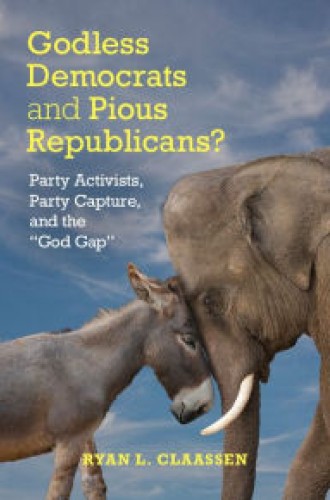Political activism and the God gap
Over the past two decades the “God gap” has been a popular trope among political journalists. Republicans are churchgoers; Democrats are secular. For the academically inclined, this division reproduces the American culture wars made famous by sociologist James Davison Hunter. And as Ryan Claassen notes in this sensible book, political and academic combatants alike often resort to conspiracy theories to explain the gap: Democrats claim that the Christian right mobilized hordes of religious extremists, capturing the GOP and reconfiguring its agenda to match their own regressive social ideas. Republicans reply that the Democratic Party is in the thrall of secularists conducting a war on religion, hell-bent on eliminating the influence of faith in the public square.
Ryan Claassen wants to root out this mythology of the God gap and debunk conspiratorial explanations of its origins. He juxtaposes two theories about the causes of partisan religious divisions. The group mobilization perspective, dominant in political science, stresses the leadership of activists in party transformation. In this view, the Christian right mobilized an enormous body of new activists, pulling the GOP to the right and attracting religious voters with traditionalist postures on abortion, gay rights, and other culture war issues. This invasion triggered a countermovement of secular (and often, secularist) activists into the Democratic Party, who attracted their own like-minded voters, creating the gap between faithful Republicans and faithless Democrats.
Claassen rejects this account for both empirical and normative reasons. First, it ignores the numerous party faithful who do not fit the portrait, such as religious Democrats and secular Republicans. Even worse, belief in the God gap and its origins in one-sided mobilizations might actually become a self-fulfilling prophecy, leading Americans to sort themselves politically in the very way the image suggests. As a more helpful alternative, Claassen offers a representation-based approach, arguing that party activists emerge from, rather than create, each party’s electoral base. The appropriate question is: Do party activists accurately reflect voting constituencies? If they do, the result accords with democratic theory—and belies the claims of conspiracy theorists.






